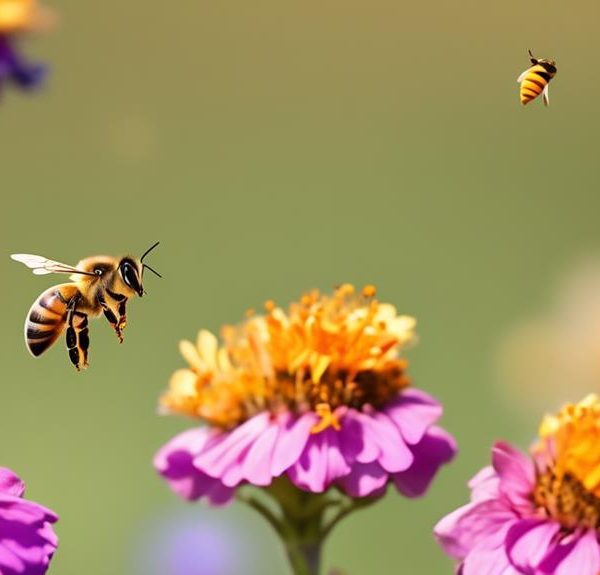Learn about the fascinating, unconventional respiratory system of bees and how it differs from human lungs.
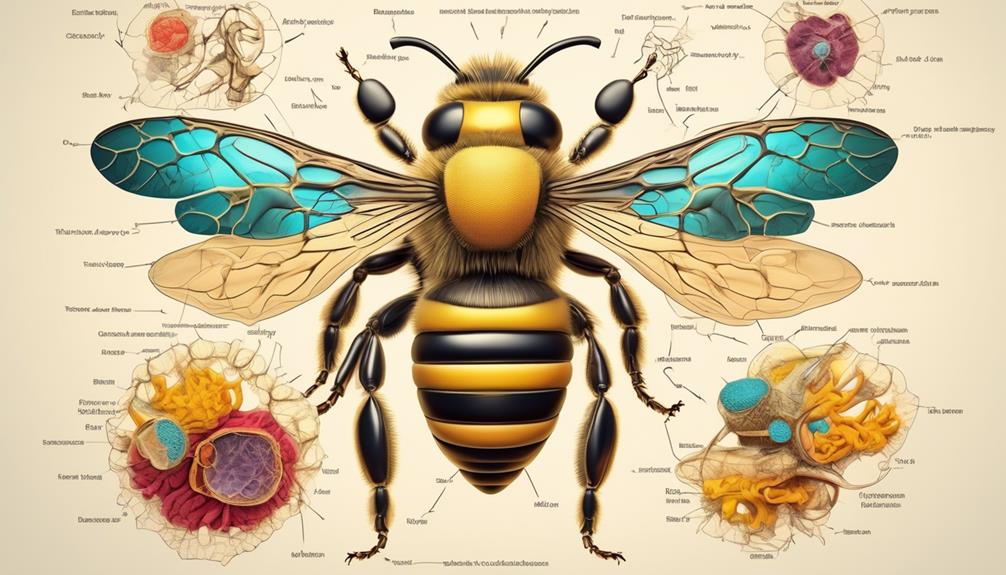
Does Bees Have Lungs?
As you buzz through the everyday wonders of nature, you've likely never stopped to question the respiratory system of bees. However, the question of 'do bees have lungs?' is more intriguing than you might think.
They're not like us humans, nor do they breathe in the same way. Instead, their system of oxygen intake and processing is a fascinating dance of evolution and environmental adaptation.
But how does it all work, you wonder? Well, that's a tale to unfold.
Key Takeaways
- Bees do not have lungs like humans.
- Bees breathe through a network of tiny tubes called tracheae.
- Oxygen is delivered directly to bee cells through passive diffusion.
- Bee respiration is adapted to their size and lifestyle, requiring less energy.
Understanding Bee Anatomy
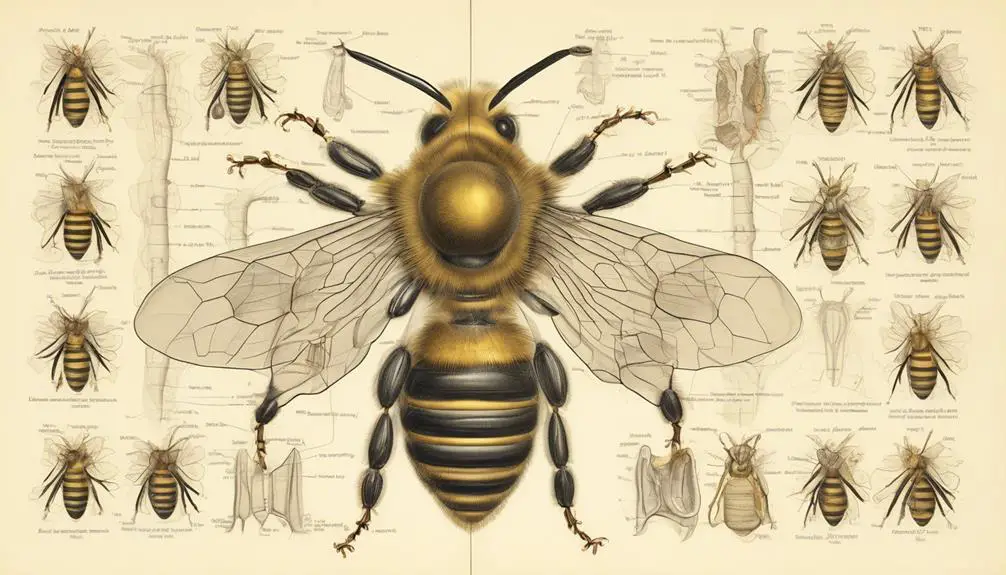
To dive into the fascinating world of bee anatomy, you must first understand that these buzzing creatures have incredibly complex and efficient bodies designed for their specialized roles in the ecosystem. Bees, like other insects, don't possess lungs. Instead, they breathe through a network of tiny tubes called tracheae. Air enters and leaves the tracheae through external openings called spiracles, found on their abdomen and thorax.
You'd be amazed to learn that a bee's body is divided into three main parts: the head, thorax, and abdomen. Each part is equipped with specific features to aid in their survival. The head houses their compound eyes, antennae, and mouthparts, which are vital for communication, navigation, and feeding.
Their thorax, on the other hand, is a powerhouse. It's where you'll find their two pairs of wings and six legs. These wings aren't just for flying; they're crucial for regulating their body temperature. Meanwhile, their legs aren't simply for walking – they're also used for grooming, carrying pollen, and building their hives.
Lastly, the abdomen is where the magic happens. It's where you'll find their digestive, reproductive, and respiratory systems. However, it's also where you'll find the stinger – a bee's primary defense mechanism.
The Bee Respiratory System
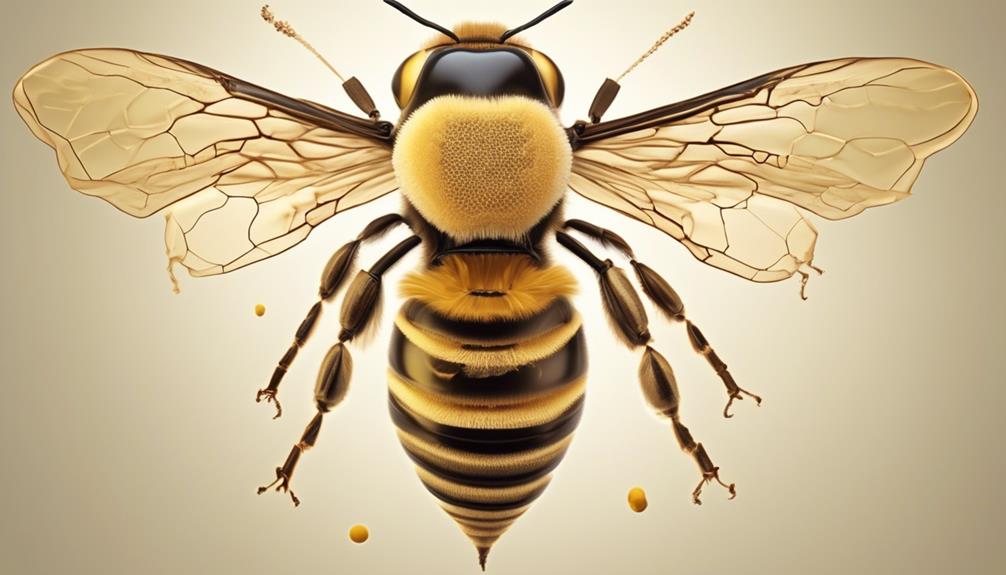
Building upon our understanding of bee anatomy, let's now explore the intricacies of the bee respiratory system, a unique mechanism that enables bees to breathe without lungs. Unlike humans, bees don't possess lungs. Instead, they rely on a network of tiny tubes called tracheae to deliver oxygen directly to their cells.
You'll be fascinated to know that the oxygen exchange in bees is passive, meaning it doesn't require any energy expenditure. Oxygen enters through spiracles, small external openings located on the sides of their bodies. From there, it diffuses through the network of tracheae, reaching each cell.
Simultaneously, carbon dioxide, the waste product of cellular respiration, diffuses out of the cells, travelling in the opposite direction to be expelled through the spiracles. This process of gas exchange is incredibly efficient, ensuring that bees have the necessary oxygen to fuel their high-energy activities.
Comparing Human and Bee Breathing
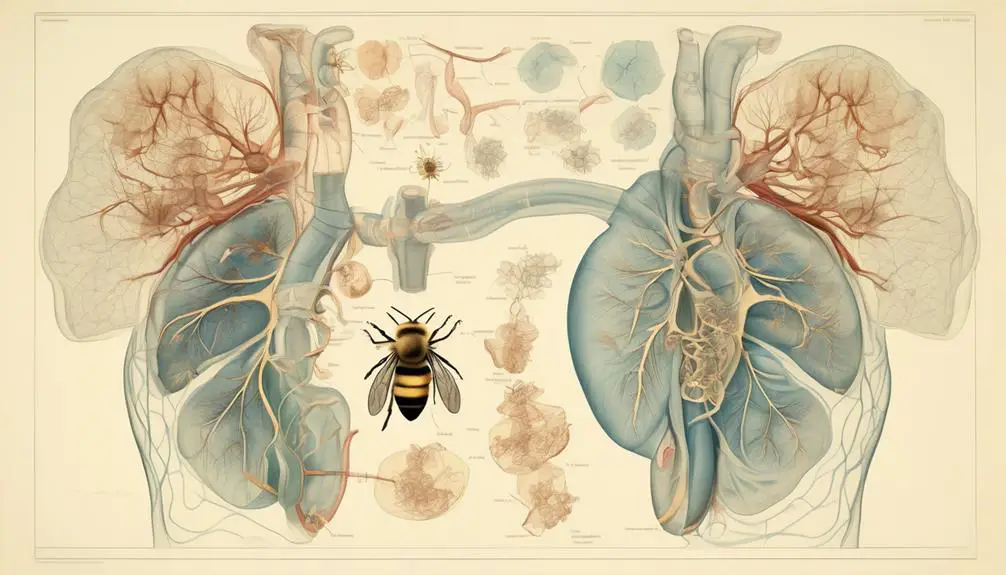
While you may find it hard to imagine breathing without lungs, bees have engineered a system that, despite its differences, accomplishes the same goal with remarkable efficiency. Bees don't have lungs, instead they breathe through a complex system of tracheae and air sacs. Air enters and exits through spiracles, tiny openings along their body, in a process called passive diffusion.
On the other hand, you, as a human, rely on a pair of lungs for respiration. Oxygen is inhaled into your lungs, where it's absorbed by red blood cells and transported throughout your body. Carbon dioxide, a waste product of cellular respiration, is then exhaled.
The bee's method might seem less efficient compared to human respiration, but it's perfectly adapted to their size and lifestyle. The passive diffusion system requires less energy, a critical advantage for creatures as small as bees. Plus, bees' metabolic rates aren't as high as humans', so they don't need to inhale or exhale as often.
How Bees Manage Oxygen Flow
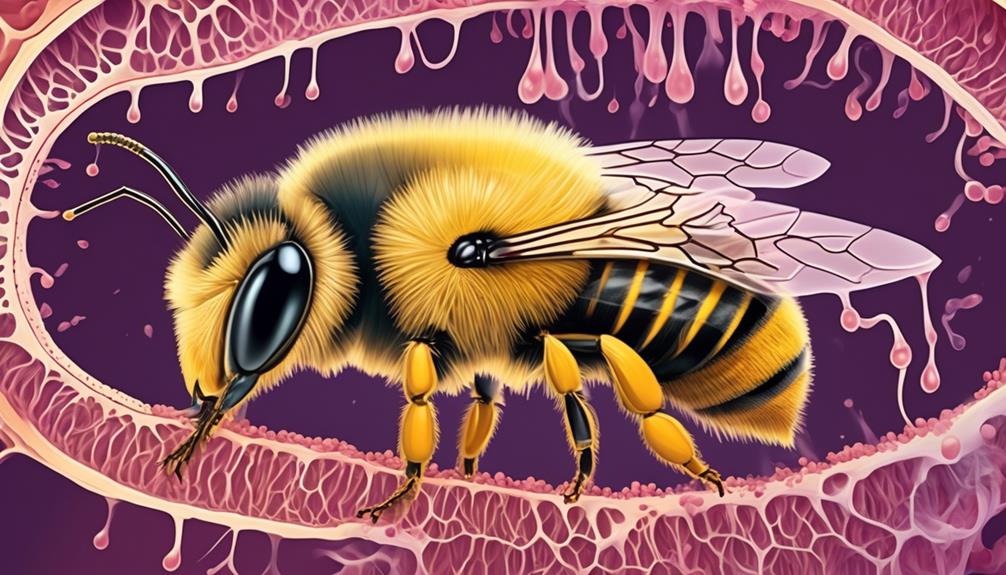
Often, you might wonder how these lung-less creatures manage their oxygen flow. Well, bees don't breathe like us. Instead, they've evolved an intricate system of tubes known as tracheae that allow them to transport oxygen from the outside directly to their cells. They don't rely on a circulatory system to deliver oxygen, which means there's no need for lungs.
When a bee inhales, oxygen enters through spiracles, tiny holes located on the sides of their bodies. The oxygen then travels down the tracheae, diffusing into their cells. They've got control over these spiracles and can open or close them as needed to regulate their oxygen intake. This is crucial as it allows them to maintain the right oxygen levels and avoid dehydration.
To exhale, bees simply reverse the process. They close the spiracles connected to oxygen-rich tracheae and open those connected to oxygen-poor tracheae. This mechanism is highly efficient and enables bees to survive in environments with varying oxygen levels.
Impact of Environment on Bee Respiration
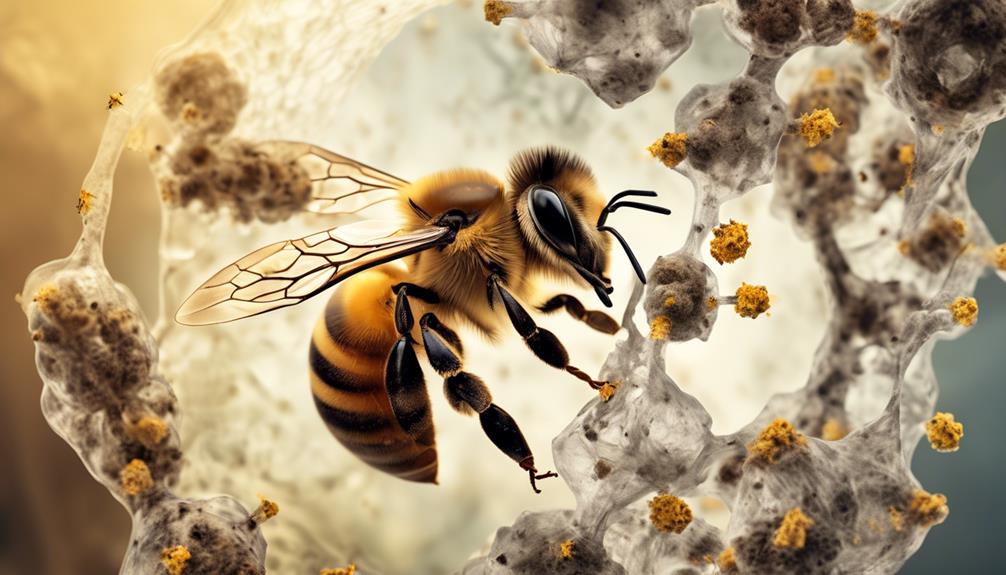
Having understood the bee's unique respiratory system, it's essential to consider how their environment influences this process. The bees' spiracles and tracheal system are finely tuned to their surroundings. They're sensitive to changes in temperature, humidity, and air quality, which can significantly impact their respiration.
Increased temperatures, for instance, can cause bees to breathe faster, expending more energy. This can lead to exhaustion and, in extreme cases, death. Likewise, high humidity can make it difficult for bees to expel moisture during respiration, affecting their overall health and productivity.
Air pollution is another environmental factor that plays a crucial role. Bees exposed to polluted environments may suffer from impaired respiratory function, which can affect their ability to forage and pollinate effectively. Pesticides, too, can pose a serious risk. These chemicals can block the spiracles, causing suffocation and, ultimately, bee death.
In essence, the environment plays a pivotal role in the bees' respiration. It's clear that sustainable practices are necessary to maintain a healthy bee population. By protecting their habitats and reducing pollution levels, we can ensure the survival of these vital pollinators.
Frequently Asked Questions
What Is the Lifespan of a Bee and Does Respiration Impact This?
You're curious about a bee's lifespan and how respiration affects it.
Well, typically, worker bees live for 5-6 weeks in summer, and queens can live up to five years.
Respiration, specifically the efficiency of oxygen intake, does impact their lifespan. Bees don't have lungs, but tiny tubes called tracheae for breathing.
Any impairment in this system could potentially shorten their lifespan.
Do Bees Have Similar Respiratory Diseases Like Humans?
You're curious about bees and human respiratory diseases.
It's interesting to note that bees don't experience similar respiratory illnesses as they don't have lungs, but rather a system of tubes called tracheae.
They're susceptible to different health issues, primarily parasites and diseases that impact their exoskeleton, not their respiratory system.
How Does the Respiration System of a Bee Affect Its Ability to Fly?
You might be surprised to learn that a bee's ability to fly is closely tied to its unique respiration system.
Bees don't have lungs like you or me. Instead, they breathe through a network of tiny tubes called tracheae. Oxygen flows in, carbon dioxide flows out.
This efficient system allows them to get the oxygen they need directly to their flight muscles, enabling their speedy, buzzing flight.
It's truly a marvel of nature's engineering.
Can Bees Survive in Oxygen-Free Environments for Short Periods of Time?
No, you can't expect bees to survive in oxygen-free environments, even for short periods. They don't have lungs, but they do breathe. They rely on a system of tubes, known as tracheae, for oxygen supply.
Oxygen enters through spiracles, diffuses down the tracheae, and reaches every cell. So without oxygen, their cells can't function, essentially leading to their demise.
It's a common misconception, but bees certainly need oxygen to survive.
How Does the Bee's Respiration System Contribute to the Overall Ecosystem?
You're probably aware that bees play a vital role in pollination. But did you know their respiration system also contributes to the ecosystem?
They breathe through spiracles connected to a network of tubes, called tracheae, not lungs. This system efficiently delivers oxygen to their bodies.
Hence, bees can maintain high energy levels for pollination, making them indispensable for our food supply and the overall health of the ecosystem.
Conclusion
In wrapping up, bees don't have lungs like humans. Instead, they breathe through a complex system of trachea and air sacs. This system manages oxygen flow efficiently. However, their respiratory process is significantly influenced by their environment.
Understanding this intricate system not only demystifies bee anatomy, but also sheds light on the importance of maintaining a healthy environment for these essential pollinators. So, while bees don't 'breathe' like we do, they've got their unique, effective way.


